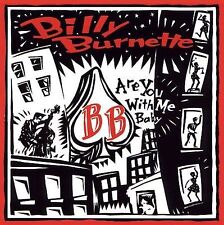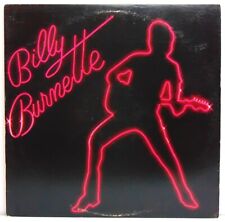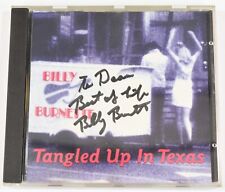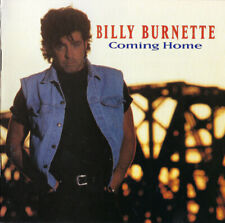|
Stephen Holden’s Dec. 13, 1979 review of Tusk from Rolling Stone. A fascinating critique, although he doesn’t appear to be blown away by the Mac’s most ambitious album…
At a cost of two years and well over a million dollars, Fleetwood Mac’s Tusk represents both the last word in lavish California studio pop and a brave but tentative lurch forward by the one Seventies group that can claim a musical chemistry as mysteriously right—though not as potent — as the Beatles’. In its fits and starts and restless changes of pace, Tusk inevitably recalls the Beatles’ “White Album” (1968), the quirky rock jigsaw puzzle that showed the Fab Four at their artiest and most indecisive. Like “The White Album,” Tusk is less a collection of finished songs than a mosaic of pop-rock fragments by individual performers. Tusk’s twenty tunes—nine by Lindsey Buckingham, six by Christine McVie, five by Stevie Nicks — constitute a two-record “trip” that covers a lot of ground, from rock & roll basics to a shivery psychedelia reminiscent of the band’s earlier Bare Trees and Future Games to the opulent extremes of folk-rock arcana given the full Hollywood treatment. “The White Album” was also a trip, but one that reflected the furious social banging around at the end of the Sixties. Tusk is much vaguer. Semiprogrammatic and nonliterary, it ushers out the Seventies with a long, melancholy sigh. On a song-by-song basis, Tusk’s material lacks the structural concision of the finest cuts on Fleetwood Mac and Rumours. Though there are no compositions with the streamlined homogeneity of “Dreams,” “You Make Loving Fun” or “Go Your Own Way,” there are many fragments as striking as the best moments in any of these numbers.
If Christine McVie and Stevie Nicks were the most memorable voices on Fleetwood Mac and Rumours, Lindsey Buckingham is Tusk’s artistic linchpin. The special thanks to him on the back of the LP indicates that he was more involved with Tusk’s production than any other group member. Buckingham’s audacious addition of a gleeful and allusive slapstick rock & roll style—practically the antithesis of Fleetwood Mac’s Top Forty image — holds this mosaic together, because it provides the crucial changes of pace without which Tusk would sound bland. “Not That Funny,” “What Makes You Think You’re the One,” “That’s Enough for Me” and “The Ledge” affect a rock & roll simplicity and directness that are strongly indebted to Buddy Holly, an obvious idol of Buckingham’s. These songs have the sound and spontaneity of beautifully engineered basement tapes. A bit more sophisticated yet still relatively spare, “Save Me a Place” boasts closely harmonized, un-gimmicky ensemble voices and acoustic textures that underline the tune’s British folk flavor. But Buckingham’s most intriguing contribution is Tusk’s title track, an aural collage that pits African tribal drums, the USC Trojan Marching Band and some incantatory group vocals against a backdrop of what sounds like thousands of wild dogs barking. “Tusk” is Fleetwood Mac’s “Revolution 9.” The calculated crudeness of Buckingham’s rock & roll forays both undercuts and improves Tusk’s elaborately produced segments. And several of these segments demonstrate that the limits of the California studio sound, developed in the Sixties by Lou Adler and Brian Wilson for the Mamas and the Papas and the Beach Boys, have at last been reached. Fleetwood Mac has arrived at the point where technologically inspired filigree begins to break down rather than enhance music, where expensive playback equipment is not only desirable for appreciation but necessary for comprehension. In McVie’s “Over & Over” and Nicks’ “Storms,” the production goes too far, and the tracks quiver with an eerie electronic vibrato. The basic style of Tusk’s “produced” cuts is a luxuriant choral folk-rock — as spacious as it is subtle — whose misty swirls are organized around incredibly precise yet delicate rhythm tracks. Instead of using the standard pop embellishments (strings, synthesizers, horns, etc.), the bulk of the sweetening consists of hovering instrumentation and background vocals massively layered to approximate strings. This gorgeous, hushed, ethereal sound was introduced to pop with 10cc’s “I’m Not in Love,” and Fleetwood Mac first used it in Rumours’ “You Make Loving Fun.” On Tusk, it’s the band’s signature. Buckingham’s most commercial efforts — the chiming folk ballads, “That’s All for Everyone” and “Walk a Thin Line” — deploy a choir in great dreamy waves. In McVie’s “Brown Eyes,” the blending of voices, guitars and keyboards into a plaintive “sha-la-la” bridge builds a mere scrap of a song into a magnificent castle in the air. “Brown Eyes” sounds as it if were invented for the production, rather than nice versa. About the only quality that Stevie Nicks and Christine McVie share is a die-hard romanticism. On Tusk, Nicks sounds more than ever like a West Coast Patti Smith. Her singing is noticeably hoarser than on Rumours, though she makes up some of what she’s lost in control with a newfound histrionic urgency: “Angel” is an especially risky flirtation with hard rock. Nicks’ finest compositions here are two lovely ballads, “Beautiful Child” and “Storms.” Her other contributions, “Sara” and “Sisters of the Moon,” weave personal symbolism and offbeat mythology into a near-impenetrable murk. There’s a fine line between the exotic and the bizarre, and this would-be hippie sorceress skirts it perilously.
McVie is as dour and terse as Nicks is excitable and verbose. Her two best songs — “Never Forget,” a folk-style march, and “Never Make Me Cry,” a mournful lullaby—are lovely little gems of romantic ambiance. With a pure, dusky alto that’s reminiscent of Sandy Denny, this woeful woman-child who’s in perpetual pursuit of “daddy” evokes a timeless sadness. The wonder of Fleetwood Mac’s chemistry is that the casting of these two less-than-major talents in pop music’s answer to Gone with the Wind elevates them to the stature of stormy rock & roll heroines—one compelled to reach for the stars, the other condemned to wander the earth. Within the context of the group, we not only accept these women’s excesses and limitations, we cherish them as indispensable ingredients of their characters. The aura of romance is finally the real substance of Fleetwood Mac’s music. If the band has an image, it’s one of wealthy, talented, bohemian cosmopolites futilely toying with shopworn romantic notions in the face of the void. Such an elegant gossamer lilt is also synonymous with the champagne buzz of late-Seventies amour. But perhaps, as Tusk’s ominous title cut and other songs suggest, in today’s climate of material depletion and lurking disorder, the center of things—including Fleetwood Mac themselves — cannot hold. Plagued by internal conflicts and challenged by New Wave rock, this psychedelically tinted folk-rock tribe might well be the last and most refined of a breed of giddy celebrants who, from the early Sixties on, prospered on the far shore of the promised land as they toasted the pure splendor of a beautiful and possibly frivolous pop dream.
Can this dream survive the economic chill of the Eighties? How far can Lindsey Buckingham’s rock & roll primitivism carry Fleetwood Mac when folk music, not rock, is really the basis of their style, and when erotic fluctuation remains their central preoccupation? Tusk finds Fleetwood Mac slightly tipsy from jet lag and fine wine, teetering about in the late-afternoon sun and making exquisite small talk. Surely, they must all be aware of the evanescence of the golden moment that this album has captured so majestically.
|





![Billy Burnette - Billy Burnette [New CD] Rmst, Reissue picture](/vintage/img/g/7RoAAOSwUihkty9H/s-l225/Billy-Burnette-Billy-Burnette-New-CD-Rmst-Reissue.jpg)



